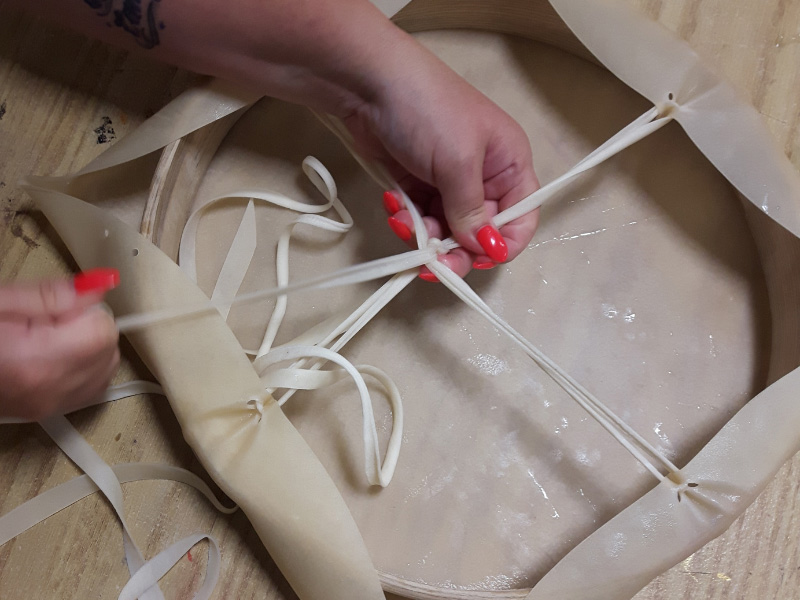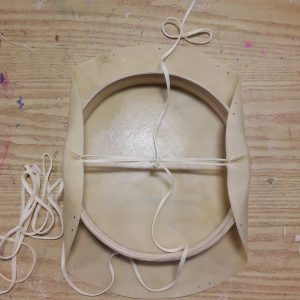
Brian led a group of Mi’kmaq youth and adults as well as several AVRL staff in building a hand drum from scratch, using deer hide and wood.
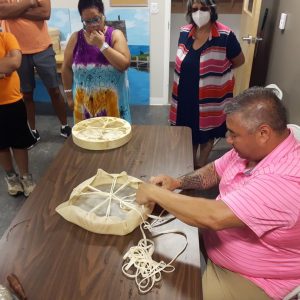
Brian likes to begin weaving on the "virtual East" side of the rim - not the actual East, but his East (or right-hand) side.
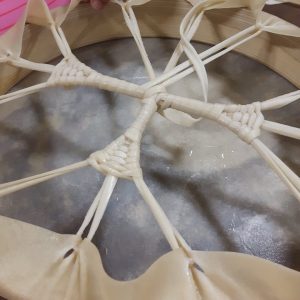
The finished handles point in four directions. Four is an important number in Mi'kmaq culture. There are four seasons, four stages of life, four ceremonial medicines, and four significant colours, to name a few.
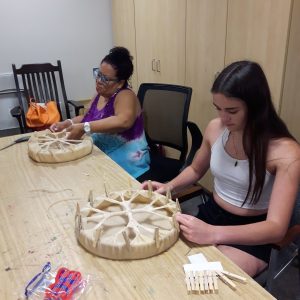
When our first day was finished we took our drums home to dry overnight.
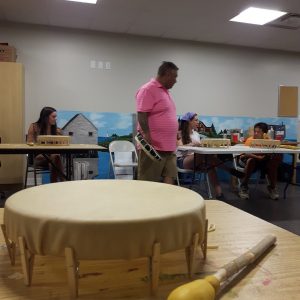
The next day we met again to play our drums! It was so exciting to hear them for the first time and felt really satisfying to know that we had made them with our own hands. Brian told us that when he was a teenager, it was not common to hear traditional songs in his community. Part of the reason was because the vast majority of songs were lost during the Residential School years, when First Nations children were forbidden from speaking their languages or singing their songs. Because of this, when he was young traditional songs were not considered "cool" by his peers. Despite this, Brian sought out Elders in his community who remembered the old songs, and learned from them. He also learned songs from other First Nations communities, and with their permission translated them into Mi'kmaq. Eventually he founded a group called the Eastern Eagle Singers so the songs could be passed down to new generations. The Eastern Eagle Singers just celebrated 30 years of singing together!
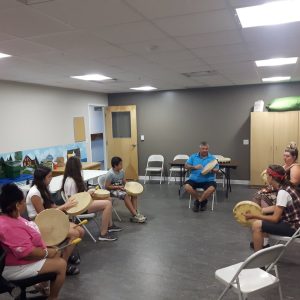
Brian taught us that traditional First Nations songs from the East have a different sound from Western plains First Nations songs. This is because of the land. In order for sound to carry above the wind that blows over flat land, it needs to be pitched higher than sound travelling over water surrounded by hills. Eastern songs are therefore pitched lower than Western songs. We learned two call-and-response songs. The first song was a friendship song, something you might sing if you were travelling to another community and wanted to let them know that you were coming for a friendly visit. Or you might sing it at a powwow with your friends and relations. The second song was called Kwan-do-Daey [Eagle Circling]. Both songs begin with one person singing the first line, and then everyone joins in to repeat that line and then sing the chorus together. We drummed along with our songs. While we were singing and drumming we closed our eyes. It was easier to hear the rhythm of the group with our eyes closed, and not worry about making mistakes.
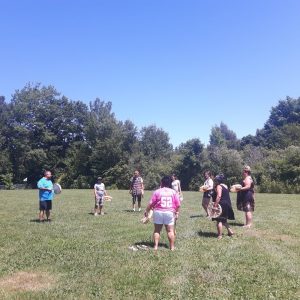
At the end of the workshop we went outside to sing the Mi'kmaq Honour Song and play the drums we had made. It was a beautiful day with a clear blue sky, and the wind was blowing through the trees. It was the perfect way to end our two days together. Thank you, Brian, for sharing your knowledge, songs, and stories! Making drums and singing with you was truly an unforgettable experience.
